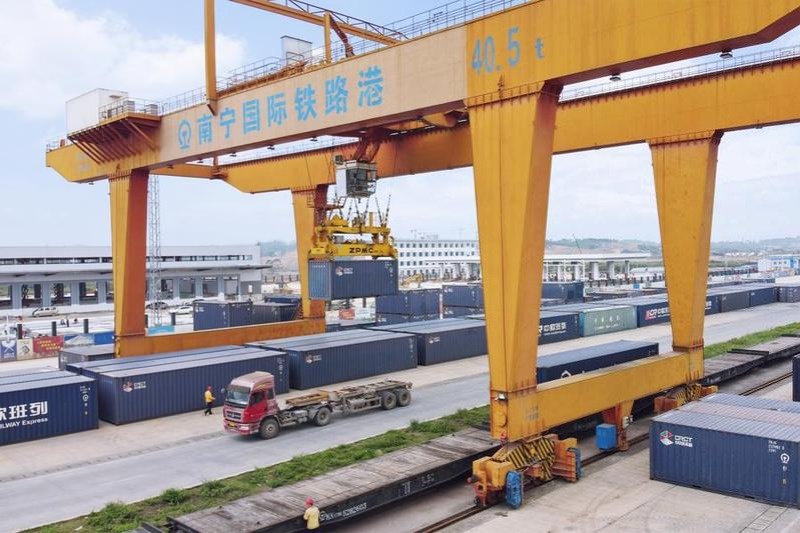Coal's role still crucial as green power grows


Stopgap role called key in ensuring consistent supply as future demand expected to expand
China should make full use of coal as a supportive part of its energy strategy as it bids to balance energy security with longer-term climate goals, according to the Report on China Electric Power Development 2022, recently released by the China Electric Power Planning and Engineering Institute.
Ensuring a sufficient power supply is a major task for China as demand is expected to see solid growth in the next three years, the report said.
While renewable energy, including wind and solar power, is the country's fastest-growing energy source, its intermittence can pose problems for the steady operation of power grids, the report said. That makes more traditional fossil fuels, like coal, very important in ensuring steady power supply, it said.
The report calls on China to accelerate augmentation of the power supply's capacity in the next few years. Part of that would be planning supportive coal-fired plants around its huge wind and solar power generation centers to help bolster the connection and transmission of large-scale renewable energy.
Coal-fired power will still play a crucial and irreplaceable role in the stability and consistency of a new power system dominated by new energy, as renewable power such as wind and solar is intermittent and unable to continuously generate power, analysts said.
While China has been developing wind, solar and hydropower on a large scale, coal still has strategic importance in the country's energy mix to further ensure the domestic power supply and avoid possible shortages amid global geopolitical tensions and extreme weather conditions like heatwaves, said Luo Zuoxian, head of intelligence and research at the Sinopec Economics and Development Research Institute.
Green transition is a process and China cannot simply "slam the brakes" on coal, he said.
The Chinese government vows to control coal use over the 14th Five-Year Plan period (2021-25) and start cutting consumption in 2026 as part of the nation's contribution to fighting global warming.
China's long-term climate goals remain unchanged, while officials' recent statements indicate coal will shift to a "supportive role" in maintaining energy security, said Muyi Yang, an analyst with British environmental think tank Ember.
According to a recent plan by the National Energy Administration, China will make cleaner coal consumption a priority and further eliminate small and inefficient mines, power plants and heating systems, while providing more support for carbon capture and storage at thermal plants.
Wei Hanyang, a power market analyst at research firm BloombergNEF, said that while China should gradually phase out coalfired power, it will still play an integral part in China's energy supply in years to come.
"It is quite necessary to support a high proportion of the green but less steady renewable energy in the country's energy mix and to build a group of coal-fired power plants, especially in Gansu province and the autonomous regions of Xinjiang Uygur, Ningxia Hui and Inner Mongolia, where ultra-high voltage (UHV) power lines that send electricity to the eastern provinces originate, he said.
"Renewable energy is less reliable than fossil fuels because the world can be dark at any given time and wind does not blow regularly, creating similar intermittency issues, and coal-fired power in these provinces will help avoid negative impacts for UHV power lines in frequency and voltage caused by the intermittency of renewable energy."
Wei also warned that China should exercise care in approving new coal-fired power plants, while coastal provinces should also gradually phase out and shut down coal-fired plants. Newly added coal-fired installed capacity should be limited to no more than 100 gigawatts by 2030, he said.
China's power supply remained stable last year, according to the China Electric Institute (CEI), a scientific research institute as well as provider of electrical products and related applications. The country's total installed power capacity rose 9.5 percent year-on-year to 82.38 billion kilowatts, while power output rose 4 percent year-on-year to 8.4 trillion kilowatt-hours.
The percentage of non-fossil fuel installed capacity rose to 47 percent last year while that for coal-fired plants dropped to 46.6 percent, it said.
The CEI suggests that China work actively on replacing fossil fuels with cleaner energy options during the 2020-40 period, then step up the transition during 2040-60 to further facilitate the country's ambition to achieve its carbon peak by 2030 and carbon neutrality by 2060.
The government has also been working on bridging the gap between developing coal and curbing emissions through more investment in cleaner coal technologies, including carbon capture, utilization and storage (CCUS).
Annual CCUS investment has consistently accounted for less than 0.5 percent of the world's investment in clean energy and efficiency technologies, according to the International Energy Agency.
China has been optimizing its energy structure since the 13th Five-Year Plan period (2016-20), and its capacity to ensure energy security has also increased. The nation's installed capacity of non-fossil fuel power generation has remained the global leader for years, while the government is also working on building a new power system with renewable energy as the mainstay as part of its green transition, the CEI said.
The country saw its total primary production of energy sources rise 6.3 percent year-on-year last year as the output of coal, oil and natural gas kept climbing, according to Liu Shiyu, assistant dean of the CEI.
Coal output last year rose to 4.13 billion metric tons, a record high, while crude output rose to 199 million tons, the third consecutive year of output growth. Natural gas output rose to 207.6 billion cubic meters, while capacity for transporting coal and the infrastructure for cross-provincial power transmission continued to be optimized, he said.
The improvements are partly due to the ongoing improvement of technologies in the energy sector, he said.
The country's offshore wind, photovoltaic power generation and hydrogen production technologies have achieved major breakthroughs during the past few years, while nuclear, hydropower and offshore gas exploration and exploitation have also achieved major breakthroughs, he said.




































